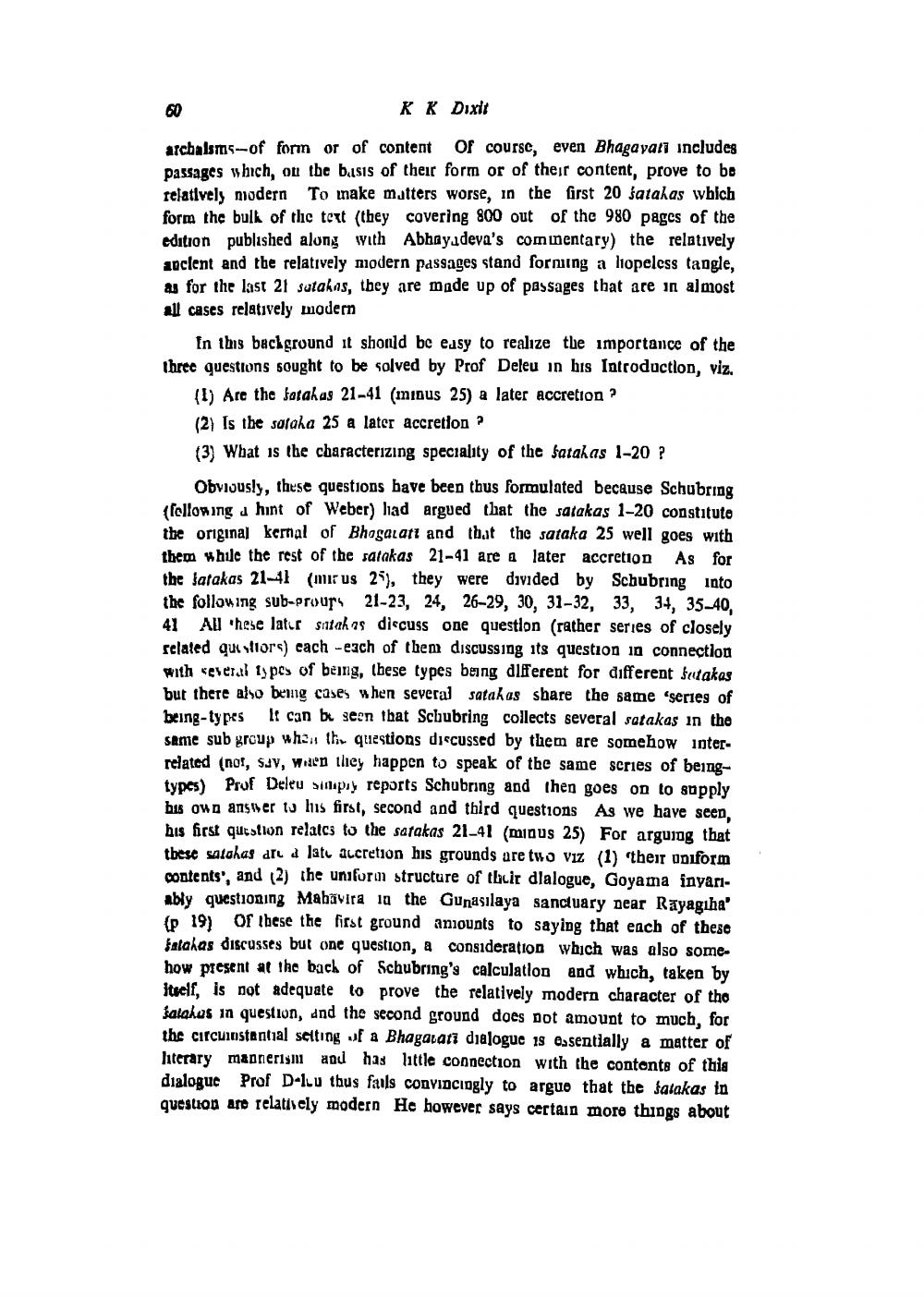________________
KK Dixit
archalsms-of form or of content of course, even Bhagayan includes passages which, on the basis of their form or of their content, prove to be relatively modern To make matters worse, in the first 20 satahas which form the bulk of the text (they covering 800 out of the 980 pages of the edition published along with Abhayadeva's cominentary) the relatively anclent and the relatively nodern passages stand fornuing a liopeless tangle, as for the last 21 sutakos, they are made up of passages that are in almost all cases relatively modern
fn this background it shonld be easy to realize the importance of the Ihrec questions sought to be solved by Prof Deleu in bis Introduction, viz.
(1) Are the larahag 21-41 (minus 25) a later accretion ? (2) Is the sotaha 25 a later accretion ? (3) What is the characterizing speciality of the fatahas 1-20 ?
Obviously, these questions have been thus formulated because Schubring following a hint of Weber) liad argued that the satakas 1-20 constituto the original kernal of Bhagalati and that the sataka 25 well goes with them while the rest of the satakas 21-41 are later accretion As for the latakas 21-41 (mir us 25), they were divided by Schubring into the following sub-prous" 21-23, 24, 26-29, 30, 31-32, 33, 34, 35-40, 41 AU hoe latur sotahas discuss one question (rather series of closely related questions) cach-each of them discussing its question in connection with several types of being, these types being different for different sotakas but there also being cases when several satakas share the same series of being-types It can bu seen that Schubring collects several satakas in the same sub group wh24 th questions discussed by them are somehow interrelated (nor, suv, Wen they happen to speak of the same scries of beingtypes) Prof Deleu stapy reports Schubring and then goes on to supply hus own anser tu hus first, second and third questions As we have seen, his first question relates to the satakas 21-41 (minus 25) For arguing that tbese satchas aru latu accretion his grounds are two viz (1) their uniform contents', and (2) the uniform structure of their dlalogue, Goyama inyariably questioning Mahavira in the Gunasılaya sanctuary near Rayagiha' {p 19) Or Ihese the first ground ancounts to saying that each of these Kalahas discusses but one question, a consideration which was also somehow present at the back of Schubring's calculation and which, taken by itself, is not adequate to prove the relatively modern character of the Salahus in question, and the second ground does not amount to much, for the circunstantial selling of a Bhagavati dialogue is essentially a matter of literary manners and has little connection with the contents of this dialogue Prof D-luu thus fails convincingly to argue that the fatakas in question are relatively modern He however says certain more things about




